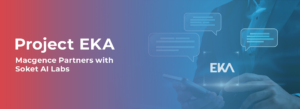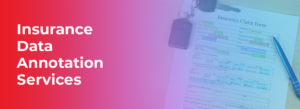What Are Simulated Point Clouds and Why Do They Matter?
3D data has become a vital resource in the rapidly changing field of artificial intelligence for creating strong and trustworthy AI models. However, gathering and organizing real-world 3D data presents a number of difficulties, including exorbitant expenses, logistical difficulties, and a lack of control over environmental conditions.
In this article, we’ll look at why simulated point clouds are revolutionary for AI training. These virtual datasets tackle important issues in 3D data collection, from cutting costs and personalizing data to generating uncommon circumstances and facilitating secure testing. We’ll also look at how they’ve revolutionized sectors including robotics, healthcare, autonomous & driving.
Simulated Point Clouds Are Essential for AI Training
Simulated point clouds are extremely important for AI training because they solve a number of issues related to gathering 3D data in the real world and offer special benefits for creating reliable AI models. Here is a more thorough explanation of their significance:
1. Economical and Expandable Data Production
Challenges in the Real World: Hiring experts and moving hardware to various locations are just two of the high operating costs and costly equipment needed to collect 3D data from sensors like LiDAR or depth cameras.
2. Command of Data Properties
Real-World Restrictions: In the real world, it’s challenging to regulate elements like scene composition, lighting, and weather.
Flexibility Simulated: Simulations provide accurate modifications to:
- Modify the resolution, range, or noise characteristics of the sensor.
- Conditions of the Environment: Model fog, rain, day/night cycles, and other meteorological phenomena.
- Object Layouts: To construct a variety of scenarios, arrange, move, or remove items.
This control makes it possible to create a variety of datasets, which enhances the performance of AI models under a range of circumstances.
3. Obtaining Edge Cases and Uncommon Situations
Real-World Difficulties: It might be risky and challenging to record uncommon or dangerous situations (such as car crashes or severe weather) in actual data.
Simulated Advantage: By generating these situations on demand, simulations enable models to be trained on important but rare occurrences, enhancing their safety and resilience in practical applications.
4. Secure Validation and Testing
Challenges in the Real World: It may be dangerous or impossible to test AI algorithms in inaccessible or dangerous settings, such as:
- Teaching self-driving cars to navigate congested crossings or ice highways.
- Creating scenarios for drones to use in search and rescue operations.
The advantage of simulating point clouds is that they enable testing in harsh or fictitious environments without running the risk of endangering people or damaging equipment.
Using Simulated Point Clouds in AI Training Applications
Applications of simulated point clouds in AI training are varied and revolutionary, spanning many different industries. These datasets make it possible to create intelligent systems that can accurately perceive and comprehend 3D environments. Let’s examine the main areas where they have an effect in more detail:
1. Autonomous Driving
AI training for self-driving automobiles benefits greatly from the use of simulated point clouds, especially in:
- Detecting the automobiles, pedestrians, bicycles, and road signs is possible with 3D object detection and tracking.
- Identifying lane lines, crossroads, and possible hazards is known as scene understanding.
- Weather and Lighting Variations: Training models for robustness involves simulating difficult conditions like rain, fog, or low light levels.
2. Robotics
Point clouds are essential for robots spatial awareness and decision-making in dynamic settings. Point clouds that are simulated help with:
- Navigation and Path Planning: Teaching robots to navigate on their own in outside areas, warehouses, or factories.
- Assisting robotic arms with precise object detection is very important for production and logistics.
3. Medical Imaging and Healthcare
Point clouds are used in medical artificial intelligence to educate algorithms that analyze intricate structures like tissues and organs. Point cloud simulations are useful for:
- Surgical Assistance: Educating AI to operate robotic surgical instruments in three dimensions.
4. Safety and Monitoring
AI models are trained using simulated point clouds to keep an eye on and protect real-world surroundings by:
- Identifying suspicious behavior or illegal entry into restricted areas is known as intrusion detection.
- Crowd monitoring is the process of examining foot traffic patterns to identify emergencies or avoid crowding.
- Training systems to detect intrusions along walls or fences is known as perimeter security.
Here’s what Macgence can do for you
Macgence delivers cutting-edge simulated point cloud solutions that enhance AI development and training. We focus on edge situations, sensor characteristics, and environmental conditions to create highly adaptable, cost-effective datasets tailored to your specific needs. Our solutions eliminate the challenges of real-world data collection, providing access to complex and rare training scenarios. We prioritize safety, precision, and innovation to ensure your AI models are powerful, reliable, and ready to perform in industries like robotics, healthcare, and autonomous driving.
Conclusion:
By overcoming the drawbacks of gathering 3D data in the real world, simulated point clouds have completely changed AI training. They are essential for developing strong AI systems because of their capacity to produce affordable, adaptable, and scalable datasets. They offer unmatched flexibility and accuracy by making it possible to simulate uncommon situations and create secure testing environments. Advances in a variety of areas, including robotics, healthcare, and autonomous driving, are possible by simulated point clouds. These virtual datasets will continue to be crucial in determining the direction of AI innovation as the need for intelligent systems increases.
FAQs
Ans: – By producing data online, they do away with the requirement for costly technology, field work, and data collecting.
Ans: – Indeed, in order to increase AI robustness, they can mimic fog, rain, lighting variations, and other environmental factors.
Ans: – They are essential to several industries, including robots, autonomous driving, healthcare, and safety monitoring.
Ans: – They permit testing in hazardous or risky situations without endangering people or property.
You Might Like
February 28, 2025
Project EKA – Driving the Future of AI in India
Spread the loveArtificial Intelligence (AI) has long been heralded as the driving force behind global technological revolutions. But what happens when AI isn’t tailored to the needs of its diverse users? Project EKA is answering that question in India. This groundbreaking initiative aims to redefine the AI landscape, bridging the gap between India’s cultural, linguistic, […]
March 7, 2025
What is Data Annotation? And How Can It Help Build Better AI?
Spread the loveIntroduction In the world of digitalised artificial intelligence (AI) and machine learning (ML), data is the core base of innovation. However, raw data alone is not sufficient to train accurate AI models. That’s why data annotation comes forward to resolve this. It is a fundamental process that helps machines to understand and interpret […]
March 6, 2025
Vertical AI Agents: Redefining Business Efficiency and Innovation
Spread the loveThe pace of industry activity is being altered by the evolution of AI technology. Its most recent advancement represents yet another level in Vertical AI systems. This is a cross discipline form of AI strategy that aims to improve automation in decision making and task optimization by heuristically solving all encompassing problems within […]
March 5, 2025
Use of Insurance Data Annotation Services for AI/ML Models
Spread the loveThe integration of artificial intelligence (AI) and machine learning (ML) is rapidly transforming the insurance industry. In order to build reliable AI/ML models, however, thorough data annotation is necessary. Insurance data annotation is a key step in enabling automated systems to read complex insurance documents, identify fraud, and optimize claim processing. If you […]


 Previous Blog
Previous Blog







